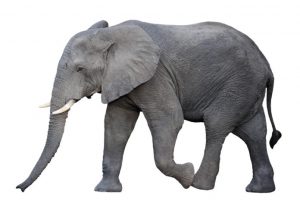Poised resourcefulness – sensing the way forward.
I have been thinking and writing about shifts in the way I go about my work. This is part of trying to understand how leaders and managers can develop a different kind of resourcefulness as they work within ongoing processes and emerging situations.
Last week this quote from Margaret Wheatley popped up on Twitter.
Everyone in a complex system has a slightly different interpretation. The more interpretations we gather, the easier it becomes to gain a sense of the whole.
Margaret Wheatley
Benjamin Taylor immediately responded by saying:
… see now – this is inspiring and helpful – yes, absolutely go and explore different interpretations … and it is *deeply* mechanistic and misleading. You cannot ‘gather interpretations’ nor can you assert that there *is* a whole.
 The same morning I also read Neils Pflaeging on the three faces of every company. The connection for me was the possibility of three perspectives on organisational structuring, one quite intentional and two more emergent, all operating and intra-acting at the same time.
The same morning I also read Neils Pflaeging on the three faces of every company. The connection for me was the possibility of three perspectives on organisational structuring, one quite intentional and two more emergent, all operating and intra-acting at the same time.
Inevitably this brought to mind the well-known metaphor of the elephant and the blind men. This has, of course, been subject to many interpretations and I don’t want to add to them. Rather, I began thinking about the process by which the blind men might share their experience of exploring the elephant before “deciding” anything at all about the meaning or significance of those experiences.
Thinking about interpretations
In a bit of a leap I started thinking about whether, in our practical decision-making, we often adopt an approach that’s influenced most by research methods. If we do perhaps this leads us to try to answer to an unhelpful question.
If we want to gather data (interpretations) until we can “see” the whole, then our practical question may well be one that has the preface, “Now we know what we are dealing with.” By asking this kind of question we are, in effect, searching for “ … a hidden, ideal, orderly state of affairs existing in reality, … , independently of any relations that we might have to it.”1
If, on the other hand, the question is a much more practical one about where to go and what to do next within the “ … unsystematic events that are unfolding in plain view before us”, our response might well be more in the form of, “Now we know how to go on”.
To operate in this way is more consistent with understanding that much of what we are dealing with is still in process and emerging. What results from our exploring of different experiences of the elephant might more be regarded as a sense of what might come next rather than a definitive naming of what we are dealing with.
Practice
So the practical suggestions from a leading/managing point of view, when you know you are in working in circumstances in which there is more to come, might be:
- Begin by creating a forum in which people can describe what they are experiencing and what they find troubling or confusing without the pressure to understand or theorise. In practice it’s actually quite hard to simply describe, rather than immediately trying to explain.
- When talking and thinking about the future (ie the goals and objective of the activity) focus the discussion on the possibilities and people’s sense of what comes next. Try to draw out what “anticipations” are guiding their actions and identify possibilities from within the current flow of activity.
Most importantly this seems to me to bring the possibility of quite different forms and understandings of leading and managing back into the equation. From this perspective leaders and managers have been described as “practical authors”and “history makers” whose primary orientation might be described as a “poised resourcefulness” in an “easy familiarity” with the activity of managing/leading, rather than a more conventional reliance on vision and control.
What makes managers authors, is that they are concerned not merely with the design of organisational structures, systems, or goals, but with creating new possibilities for action, new ways of being and relating in indeterminate, ill-defined realms of activity. In this way, they are more like artists than engineers.2
Anne Cunliffe
I have to say that this seems to resonate much more with my practical experience and that of most of the leaders and managers I have worked with.
I would love to hear from anyone who tries any of this out. Please feel free to contact me. Likewise if you would like some help putting this stuff into practice please feel free to be in touch.
These ideas draw on: